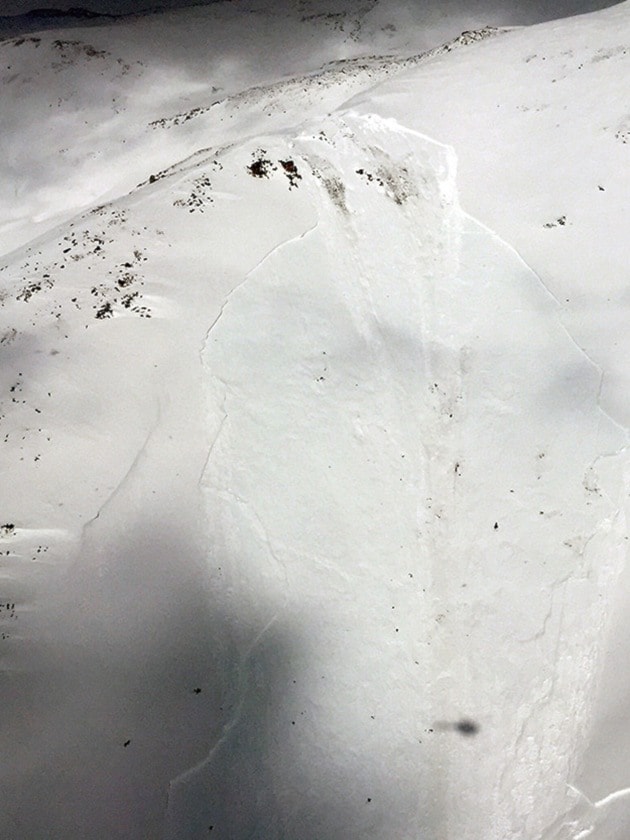Alex Cooper, Revelstoke Review
Avalanche Canada’s snowmobile committee had a conference call recently. For 2.5 hours they scratched their heads and tried to figure out why so many snowmobilers had died in avalanches so far this winter.
“The whole community, everybody’s at a loss right now. Why are things happening?,” Brent Strand, the snowmobile outreach coordinator with Avalanche Canada, said.
The reports were grim. There was one death near Prince George on Jan. 23, then five near McBride, B.C., six days later.
A Calgary man died on Feb. 21 near Golden and a Sicamous man died in an avalanche near his home on Mar. 8.
There were four more deaths from Mar. 13‚ two near Blue River, another in the north Shuswap, and the last near Castlegar.
All told, this is the worst winter for snowmobiling deaths since 2008-09, when 19 sledders died in avalanches. That deadly winter, along with the 2010 Boulder Mountain avalanche near Revelstoke, spurred a huge initiative from Avalanche Canada to reach out to the snowmobile community, and from within the snowmobile community to encourage each other to get educated.
The intervening five years saw far fewer snowmobile deaths. From 2010‚ to 2014‚ there were 18 deaths, an average of less than four per winter. “Last year, it felt like it was working,” said Strand.
For people in the industry, one of the most disturbing issues is how people have died. Rules that should be well known, such as always having proper safety gear, never putting more than one person on a slope, not stopping in avalanche terrain, and never traveling alone, were factors in most deaths.
Two incidents involved people traveling alone. One involved someone without a working transceiver. At least two involved multiple people climbing a slope at the same time.
The McBride tragedy saw 17 people get caught. Five died.
Many were experienced riders familiar with the terrain they were traveling in.
“It’s the same old basic, simple rules that people aren’t following,” said Strand.
The repeated tragedies have prompted an outcry from snowmobile industry professionals.
Revelstoke’s Nadine Overwater, who is a snowmobile guide and coaches female sled camps,¬†wrote an article for Mountain Sledder magazine decrying some of the poor travel habits she’s seen this year.
“On more than one occasion I have had to give a piece of my mind to a random sledder who decided to continue riding a slope above one of my clients while she worked to get her sled unstuck. These actions are not OK, and they should not be normal but sadly I feel like they are,” she wrote.
A similar call to arms was posted by Curtis Pawliuk, who teaches avalanche safety courses in Valemount. “This weekend we witnessed so many scenarios that almost made it embarrassing to be labeled as a mountain sledder,” he wrote in a Facebook post that was shared widely. Most importantly, he said that people who do know what they’re doing need to reach out to what he dubbed “the un-reachable mountain sledder.”
Richard Cronier, the vice-president of the BC Snowmobile Federation,¬†posted a video to Facebook asking sledders to hold a “tailgate meeting” every morning before going out into the mountains. The subject of those meetings should be avalanche conditions, terrain and travel plans.
There are multiple factors at play. Snowmobiles get better every year and make it easier for inexperienced riders to get to places that only the best riders could access a decade ago. It means sledders have to make more terrain decisions, and at a quicker rate than other groups such as skiers.
Ilya Storm, a forecaster with Avalanche Canada, wrote a blog post where he likened snowmobilers today to heli-ski guides in the 70s and 80s. Like those guides, snowmobilers have to be capable of evaluating a large amount of terrain over the course of a day. Unlike a ski tourer, who might just ski one or two runs in a day, sledders are going to cross multiple slopes at a variety of aspects and elevations over the course of a day.
Storm wrote. “Mountain sledders, need to realize that the sport they‚Äôve chosen is incredibly challenging; in many ways, the riding is the easy part.”
About 7,000 people a year take the basic Avalanche Skills Training level one course. Only about 10 per cent are snowmobilers, despite the fact they make up a much higher percentage of the backcountry community.
